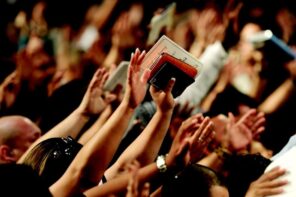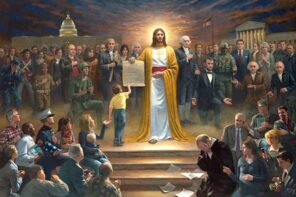Public Pulpits by friend Steven M. Tipton of Emory is a timely, historically-informed analysis of “Methodists and Mainline Churches in the Moral Argument of Public Life.” The “pulpit” is largely metaphoric here, because Tipton’s accent is on policy-making and headquarters’ involvements in politics, but these inform preachers. The book will provide background for discussions of the role of preachers and, yes, pulpits, in the political side of public life. (I prefer to hear political discourse in the lecture hall or classroom, where there can be give-and-take, while the sermon is in most ways monological.)
Preachers seldom have had it so good, or so bad, as they have it during the current campaign, as treated not so much by campaigners as by media commentators. So good? The commentators propagate the idea that preachers have enormous and spellbinding power. This implies that if a preacher says something, everyone will hear and, unless restrained, act upon what they heard, for good or evil. During a campaign, that means “for evil.” They also never had it so bad because they have not gotten the point across, culture-wide, that congregants are smart enough to filter, discreet enough not to tear the sermons apart, and hungry enough that they want to hear “the gospel,” messages of faith and hope and love as they try to put their week or part of their lives together.
If they would consult their friendly neighborhood historians of American Christianity (Protestantism in particular) they would get ample evidence. My students have heard that, were I to carve a Mt. Rushmore of twentieth-century preachers, it would include five: Walter Rauschenbush, Harry Emerson Fosdick, Reinhold Niebuhr, Martin Luther King Jr., and William Sloane Coffin. They all preached to many classes of people, including those powerful enough to get their names in print. Some hearers were alienated and walked away to receive sweeter messages (as some blacks now do, too, with the non-biblical “Prosperity Gospel”). Some did not. Start with John D. Rockefeller, who traipsed and slogged through the mud of the slummy West Side in New York, in support of the “Social Gospel” preacher Rauschenbush and his church and charities. His “Gospel” was near-socialist and we may presume that Rockefeller was capitalist. Yet they never broke. The magnate admired the preacher/theologian and stayed with him.
Next generation: John D. Rockefeller Jr., admired modernist Harry Emerson Fosdick enough to basically fund cathedral-like Riverside Church in New York. We have records of the give-and-take contentions between preacher and hearer, often about the place of the businessperson, one of which Rockefeller was. When Reinhold Niebuhr was a Detroit pastor he had no notable members, but he challenged all on issues of labor; not all of them agreed with him, but they stayed and cried when he left. King was in his own pulpit briefly, but later he was in many pulpits, sometimes all but cursing racist America before he preached the gospel of reconciliation. His test: Who stuck with him when he radically criticized the Vietnam War? Many were conflicted, but stayed.
William Sloane Coffin, a man of legends, told various versions of how a “right-wing” friend raved about his pastor and beckoned Bill to church to hear him. They heard a sermon that had to be classified “left.” How did this work? “Listen, he held my wife’s hand during her last twenty-four hours and mine the next twenty-four. I’d show up even if he only read the Yellow Pages.” We have a lot to learn about pulpit-pew transactions, so little understood within the sanctuaries and, for sure, beyond them “in public.”
Sightings is a publication of The University of Chicago’s Martin Marty Center




